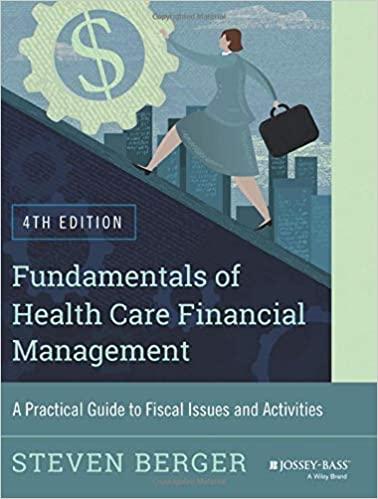Question
http://197.14.51.10:81/pmb/GESTION2/FINANCE/0324422636.pd Page 74 BUSINESS CASH FLOWS In a business, income is represented by adjusting net income from the income statement for noncash items like depreciation.

http://197.14.51.10:81/pmb/GESTION2/FINANCE/0324422636.pd
Page 74
BUSINESS CASH FLOWS In a business, income is represented by adjusting net income from the income statement for noncash items like depreciation. Assets and liabilities are conveniently listed on balance sheets as of the beginning and end of the year, so changes in each account can be calculated easily. However, in a business context changes in balance sheet amounts get a little confusing when assets include things like accounts receivable and liabilities include items like accounts payable and accruals. Its not as easy to see that an increase in receivables is a use of cash as it is to understand that you need cash to buy a car. A decrease in accruals is also more difficult to fathom as a use of cash than is paying off a loan. Cash Flow Rules In practice we dont have to worry about thinking through how cash flows in and out of every account. Four simple rules illustrated in the preceding examples can be applied to any businesss financial statements. All we need to do to analyze cash is to keep those rules in mind. The rules are that changes in balance sheet accounts result in sources and uses of cash as follows. Asset increase Use Asset decrease Source Liability increase Source Liability decrease Use Standard Presentation A businesss statement of cash flows is organized to show cash flows from three different kinds of activities: operating, investing, and financing. Operating activities have to do with running the business on a day-to-day basis. Investing activities occur when the firm buys (invests in) or sells things such as fixed assets that enable it to do business. Investing activities also include longterm purchases and sales of financial assets.3 Financing activities occur when the company borrows money, pays off loans, sells stock, or pays dividends. They have to do with raising money and servicing the obligations that come along with it. Graphic Portrayals Before tackling a numerical example, lets fix these ideas in mind by looking at two graphic representations of cash flow in a business. Figure 3.2 shows how cash flows in and out of a company. Notice that operating activities have to do with the normal course of business and the current accounts of the balance sheet. Investing activities generally have to do with buying long-lived assets, either real or financial. Financing activities are concerned with debt and equity. The statement of cash flows presents operating, investing, and financing activities separately. 3. The term invest generally means buying something that is expected to return more than its cost in the future. When individuals say invest they usually mean buying a financial asset. However, we sometimes use the term with physical things (investing in a house) or even intangibles (investing in an education). When we talk about investment by companies we generally mean buying the equipment used in doing business such as machinery, vehicles, and real estate.
Look at the following Business Cash Flow image from from Lasher Chapter 3 and do the following:
1.) Relate comments made by our author as to its ability to explain cash movement
2.) Relate it to your specific firm/institution in regard to how you see both the importance of inflow sources and the management of cash outflows and challenges or opportunities they present.
3.) Research done on the awareness and importance of cash flow for both corporate, partnerships and sole owner entitities.
4.) Cash Management strategies used today to assist financial managers in their efforts to improve cash flow.
5.) Other related cash flow commentaries

Step by Step Solution
There are 3 Steps involved in it
Step: 1

Get Instant Access to Expert-Tailored Solutions
See step-by-step solutions with expert insights and AI powered tools for academic success
Step: 2

Step: 3

Ace Your Homework with AI
Get the answers you need in no time with our AI-driven, step-by-step assistance
Get Started


